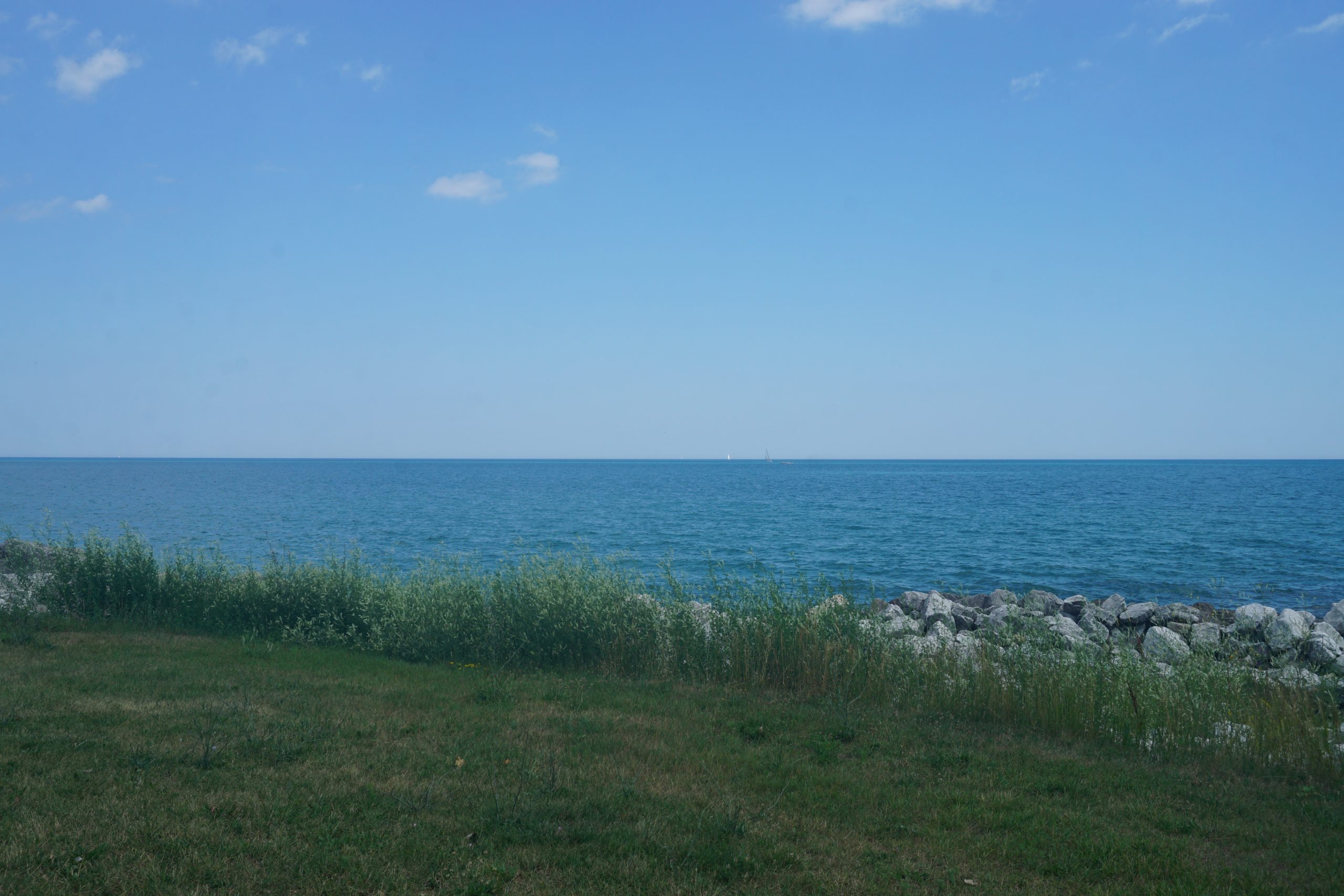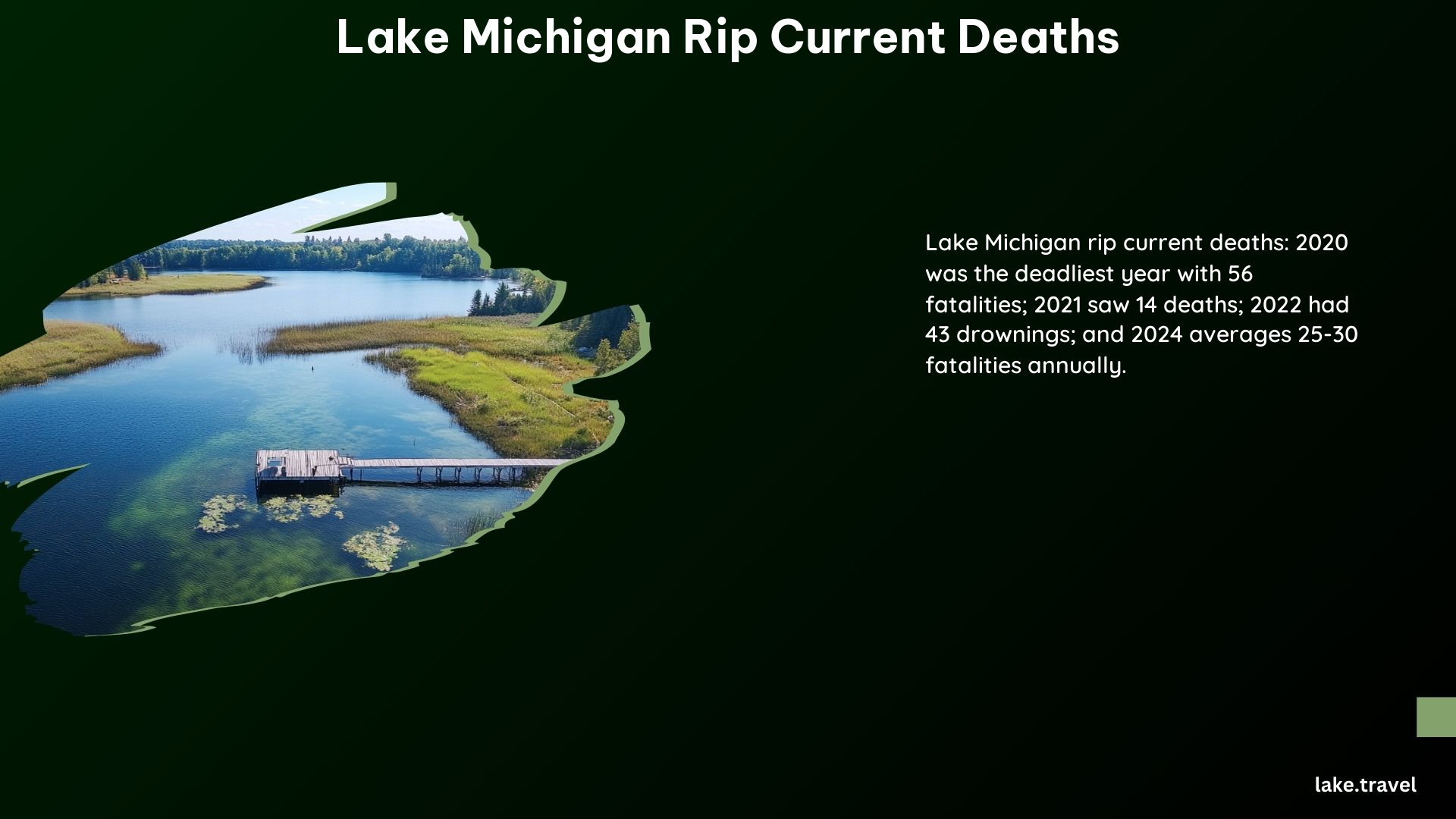Lake Michigan, one of the Great Lakes, is known for its beautiful beaches and recreational activities. However, it also poses a significant threat to swimmers due to rip currents, which have led to numerous fatalities over the years. In this blog post, we will explore the common conditions that lead to rip current deaths, the statistics on fatalities, and the essential safety measures to prevent such tragedies.
What are the most common conditions that lead to rip current deaths on Lake Michigan?

The risk of rip current-related deaths on Lake Michigan is influenced by several factors:
- Wind Direction and Wave Height: Rip currents are more likely to occur when the wind is blowing towards the shore, creating chaotic waves. Heavy winds blowing parallel to the shore can also create structural currents that can pull swimmers towards piers or jetties.
- Weather Conditions: Moderate swim risk warnings from the National Weather Service may not accurately reflect local beach conditions. It is essential to check flags posted by lifeguards, which indicate the safety level at the beach.
How many fatalities occur on Lake Michigan due to rip currents each year?

The statistics on rip current-related deaths on Lake Michigan are alarming:
- Average Annual Deaths: Since 2016, there have been an average of 25-30 fatalities on the Great Lakes due to dangerous currents, with Lake Michigan being the deadliest.
- Recent Years: In 2021, at least 56 people died in Lake Michigan, and by mid-2022, there were already 26 deaths reported.
- Total Deaths: Since 2002, rip currents have killed nearly 130 Americans in the Great Lakes, with 60% of those deaths caused by rip currents.
What safety measures can be taken to prevent rip current deaths on Lake Michigan?
To mitigate the risks of rip current-related accidents on Lake Michigan, it is crucial to follow these safety measures:
- Swim at Lifeguarded Beaches: Swim at beaches with active lifeguards, especially during lifeguard hours, as they can provide accurate assessments of local beach conditions.
- Check Flags and Signs: Pay attention to flags posted by lifeguards indicating the safety level at the beach. Green flags indicate waves less than two feet, yellow flags indicate waves between two and four feet, and red flags indicate waves above four feet.
- Understand Rip Currents: Educate yourself on how to identify and respond to rip currents. The “flip, float and follow” strategy can help conserve energy and reduce panic.
- Know Your Swimming Ability: Be honest about your swimming ability and do not overestimate it. Males are more likely to overestimate their swimming ability and take risks, leading to a higher risk of drowning.
- Stay Calm and Follow Safety Protocols: If caught in a rip current, stay calm, float with the current, and swim parallel to the shore to escape the current.
By understanding the risks and taking these safety measures, you can enjoy your time on Lake Michigan while minimizing the risk of rip current-related accidents.
References:
- https://www.hollandsentinel.com/story/news/accident/2022/07/14/riptide-currents-led-multiple-drownings-lake-michigan-waterways/10056562002/
- https://www.fox6now.com/news/lake-michigan-rip-current-warning-after-drownings
- https://www.jsonline.com/story/news/local/milwaukee/2024/06/28/what-to-know-about-dangerous-rip-currents-in-lake-michigan/74238526007/
- https://www.wunderground.com/article/news/weather/news/rip-current-great-lakes-deaths
- https://www.foxweather.com/lifestyle/great-lakes-rip-currents
